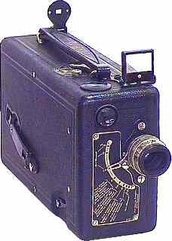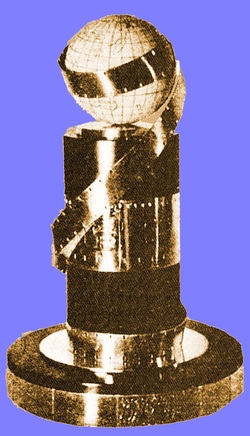How it all started

Cine Kodak Model B.
It was the year 1931. Film-making was something that amateurs could do now. In Brussels and Belgium, a few film enthusiasts organised an international film contest. Only a couple of European countries took part, among them Belgium of course, France and the Netherlands. This was not because in other countries film was not popular, probably film-makers would have loved to participate, but travel in the 1930’s was quite a thing.
The Dutch films won several prizes in Brussels and, ecstatic with joy, the very recently established Nederlandsche Smalfilm Liga (now called NOVA) organised the second festival a year later in Amsterdam. The French would not lag behind those two small countries and planned their international “concours” in Paris in 1933. Japan wanted to organise something in 1934, but met with all sorts of practical obstacles and unfortunately there was no festival that year.
The Dutch films won several prizes in Brussels and, ecstatic with joy, the very recently established Nederlandsche Smalfilm Liga (now called NOVA) organised the second festival a year later in Amsterdam. The French would not lag behind those two small countries and planned their international “concours” in Paris in 1933. Japan wanted to organise something in 1934, but met with all sorts of practical obstacles and unfortunately there was no festival that year.
UNICA is established

The first "UNICA" prize.
In 1935 it was the Spanish who thought it was their turn. That year in Barcelona there was not only a contest of films but for the first time the participating delegations had a broad discussion. The goal of the meeting was to establish a more intensive international cooperation between the countries. 15 national delegations, among which by this time were Japan and even Argentina, debated about such issues as terrible difficulties with customs when trying to send or bring films from one country to another. In many countries this proved to be a real obstacle in the international exchange of film programmes. There was also a suggestion of classifying the films into different categories.
Next in line was Germany. In 1936 in Berlin. Again there was not only a film event but difficult negotiations between the delegates resulted at last in a general consensus. A year later, in Paris 1937 this led to the establishment of l’Union Internationale du Cinéma d’Amateur, in short UNICA.
The Netherlands presented the new-born with its first Exchange Prize for the best film of the festival. It consisted of a silver film strip wound around an ivory globe, mounted on a pedestal of ebony. It was designed by the then chairman of the Dutch organisation NSL, Leo Krijn.
His design is reflected in the official logo, which spins at the foot of this page.
Next in line was Germany. In 1936 in Berlin. Again there was not only a film event but difficult negotiations between the delegates resulted at last in a general consensus. A year later, in Paris 1937 this led to the establishment of l’Union Internationale du Cinéma d’Amateur, in short UNICA.
The Netherlands presented the new-born with its first Exchange Prize for the best film of the festival. It consisted of a silver film strip wound around an ivory globe, mounted on a pedestal of ebony. It was designed by the then chairman of the Dutch organisation NSL, Leo Krijn.
His design is reflected in the official logo, which spins at the foot of this page.
The map in the header is adapted from one supplied by www.free-world-maps.com
